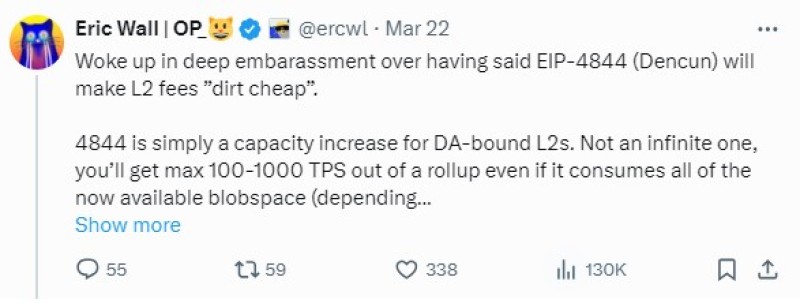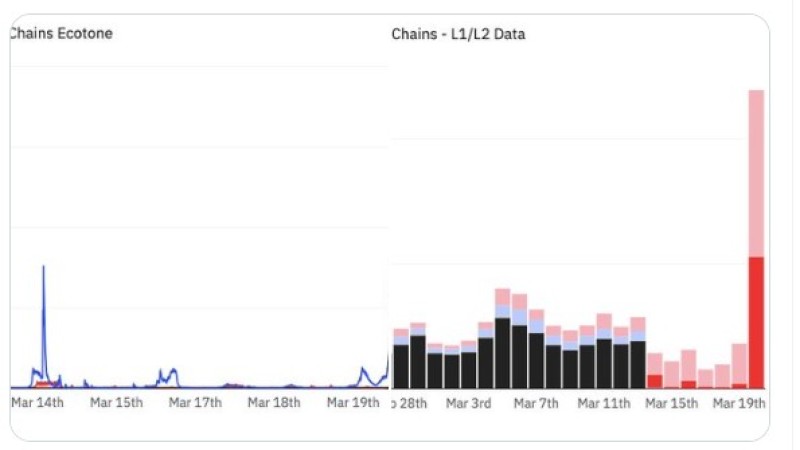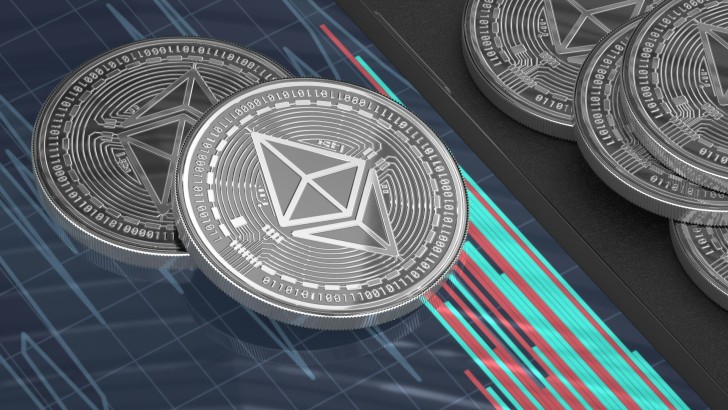Bitcoin developer Eric Wall challenges the perception of reduced fees on Ethereum's Layer 2 solutions (L2s) following the EIP-4844 upgrade.
Understanding EIP-4844
Bitcoin developer Eric Wall has critically examined the potential impact of Ethereum Improvement Proposal 4844 (EIP-4844) on the scalability and fee dynamics of Ethereum's Layer 2 (L2) solutions, following the successful activation of Ethereum's Cancun-Deneb upgrade. EIP-4844, which introduced improvements in data logistics and fee reduction measures on L2s, has been subject to scrutiny, with Wall cautioning against overestimating its efficacy in addressing throughput and fee challenges.
Limitations of Post-Dencun L2s
Wall debunked the notion that EIP-4844 would render L2 fees "dirt cheap," emphasizing that it primarily facilitates a capacity increase for Data Availability (DA)-bound L2s. He elucidated that despite potential optimizations, L2 rollups post-Dencun would only scale to approximately 100-1,000 transactions per second (TPS), indicating inherent limitations in achieving significant fee reductions solely through EIP-4844 implementation.

Eric Wall's Analysis
Addressing concerns regarding fee dynamics, Wall highlighted scenarios where fee spikes could occur, particularly under extreme buying pressure or limited throughput conditions. He underscored the role of sequencers in determining fee allocation and order prioritization, emphasizing that fee fluctuations on L2s can be independent of underlying L1 costs.

Fee Spikes and Sequencer Design
The recent activation of EIP-4844 has witnessed varied outcomes across Ethereum L2 networks, with some experiencing notable fee reductions while others remain relatively unaffected. Despite improvements observed on dominant L2s such as Optimism, Arbitrum, Starknet, and zkSync Era, certain networks like Loopring, zkSync Lite, and Boba Network have displayed minimal fee changes post-Dencun upgrade.
Сonclusion
Eric Wall's analysis sheds light on the nuanced implications of EIP-4844 on Ethereum L2 fee dynamics, cautioning stakeholders against unrealistic expectations and advocating for a comprehensive understanding of the complex interplay between protocol upgrades and network scalability.
 Peter Smith
Peter Smith

 Peter Smith
Peter Smith

